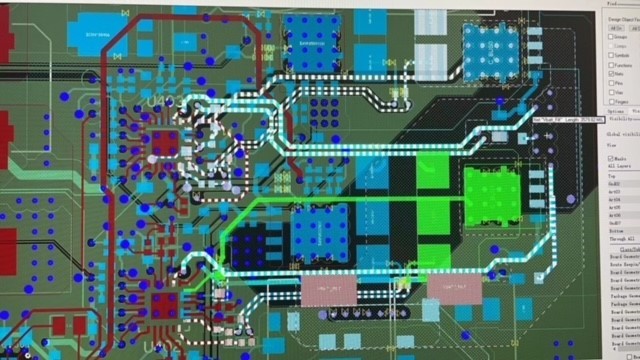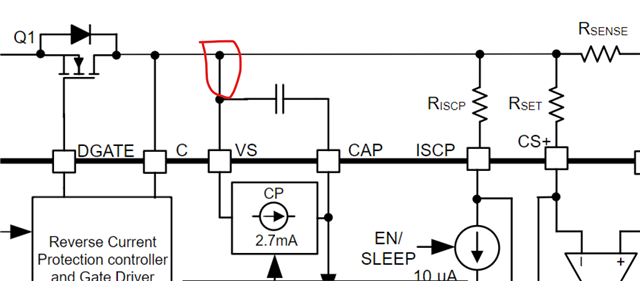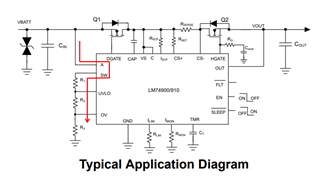Other Parts Discussed in Thread: LM74900-Q1
Hi Expert
Customer use cause as below:

The MCU power form LM74910 output and the sleep pin default tie to GND.
when LM74910 power, EN rise slowly and sleep pin still low. when LM74910 have output and make MCU power on, the sleep pie will be pulled high.
we know when EN is high and sleep is low at the same time, 74910 will move to sleep mode but base on above process, when LM74910 power on, EN will to high but sleep pin still low. Is it make device move on sleep mode?
in addition: we want to know when we want to triggers sleep mode whether is pull low sleep pin? if device doesn't build stable output(e.g. first power), sleep mode whether is be blanking?
Question 2:


the green wire from source of Mos to CAP. Is there have any risk in too long wire?





